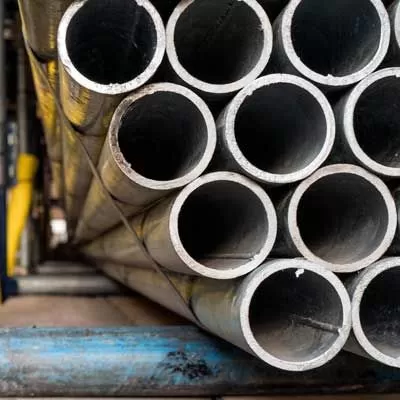- Home
- Building Material
- Steel
- Here's how construction companies are managing their market risks with a special focus on commodity risks through hedging
Here's how construction companies are managing their market risks with a special focus on commodity risks through hedging
Construction projects, to an extent, are dependent on the cost of ma...
Read full article
CW Gold Benefits
- Weekly Industry Updates
- Industry Feature Stories
- Premium Newsletter Access
- Building Material Prices (weekly) + trends/analysis
- Best Stories from our sister publications - Indian Cement Review, Equipment India, Infrastructure Today
- Sector focused Research Reports
- Sector Wise Updates (infrastructure, cement, equipment & construction) + trend analysis
- Exclusive text & video interviews
- Digital Delivery
- Financial Data for publically listed companies + Analysis
- Preconceptual Projects in the pipeline PAN India
<span style="font-weight: bold;">Today's construction industry is experiencing fierce competition and low margins, resulting in companies focussing on cost risk awareness.</span> <p></p> <p>Construction projects, to an extent, are dependent on the cost of materials such as steel and cement in foundation and frames, aluminium in conductors, copper in cables, wood in carpentries, diesel needed for machine work, and so on. As per the general trend, the material cost in a construction project represents 40-60 per cent of total construction cost. According to a report by the Ministry of Statistics and Programme Implementation, as many as 358 infrastructure projects, each worth Rs 1.5 billion and above, have shown a cost overrun to the tune of Rs 3.37 trillion owing to delays and other reasons.</p> <p>Financial risk management of commodities is not easy or straightforward, resulting in difficulties in choosing the right management tool. Another factor that renders these companies exposed is a lack of understanding of the magnitude of commodity risks. Contractual frameworks with suppliers and partnering relationships with clients are some solutions for construction companies to minimise risks. However, the risks are not entirely eliminated. The companies manage their market risks with a special focus on commodity risks through hedging.</p> <p> <span style="font-weight: bold;">The hedging scenario </span><br /> Compared to global construction companies, the appetite of Indian construction companies for hedging is meagre. Of late, a few big companies are exposing themselves to commodity hedging. All industries are exposed to this price volatility risk for their input raw materials. </p> <p>In the construction industry, we are exposed to mainly TMT rebars (which comprises around 20-25 per cent of the cost in large civil projects) and aluminium, copper and zinc (conductors, cable and transmission line structures) in electrical projects. Hedging can be done for TMT rebars as these have been trading at the LME as well as domestic commodity exchanges like MCX, NCDEX, NMCE, ICEX, etc. </p> <p>But for conductors, cables and transmission line towers, only raw materials hedging will happen.</p> <p> <span style="font-weight: bold;">Understanding hedging </span><br /> Hedging means reducing or controlling risk and is an insurance method for commodity traders, producers and end-users, to cover themselves against negative price movements. Hedging is not used to make profits but rather to prevent or at least minimise possible losses. The futures exchange is commonly used to hedge against price risks. Market participants obtain derivatives on the exchange to cover themselves against price movements. These futures contracts and options on these exchanges are rarely executed. The position will be offset, which means obtaining an opposite contract to settle the contract. The commodity will then be sold on the cash market and the profit or loss made by offsetting the futures position will be added to the final cash price. The possible profit or loss is then covered by the profit or loss made by the futures contract.</p> <p>There are two main motivations for a company to hedge: <br /> To lock in a future price that is attractive, relative to an organisation's costs.<br /> To secure a price fixed against an external contract.</p> <p> <span style="font-weight: bold;">Role of basis</span><br /> The basis is an indicator for the difference between the local cash price and the futures price for a specific commodity. The basis for a commodity can play an important role in determining a hedging strategy and can help predict a final price for a commodity when using a hedge.</p> <p>A basis can be influenced by factors such as transportation costs, local supply and demand conditions, interest, storage costs and profit margins. The basis can change depending on these factors. It is important to monitor the developments of the basis as it provides an indication for both, buyers and sellers, on how to hedge their price risk and predict a final price for their product. The basis tends to be consistent, despite price fluctuations, and can be considerably accurately predicted using historical patterns. It is, therefore, useful for determining when and what portion of your risk to hedge, or perhaps not to hedge at all.</p> <p>When a basis is strengthening, it is advantageous to a seller or short hedger of a commodity. </p> <p>This means the difference between the cash and futures price is becoming more positive and, thus, a seller will receive a higher cash price when selling his product on the cash market. When a basis is weakening, it is advantageous to a buyer or longer hedger of a commodity because the difference between the cash and futures price becomes more negative. This results in the option to buy the product at a lower price and, thus, generate extra profit.</p> <p> <span style="font-weight: bold;">Importance of margins</span><br /> When hedging price risks, it is important to be aware of the margins that apply to a futures contract. A margin is a money deposit that is required to obtain a buy or sell position on a futures contract. This is usually only a small percentage of the total value of the contract. The value of a futures contract may decrease over time, which causes the margin to increase, to cover the loss on the futures contract. The maintenance margin may exceed the money deposited in the account. When this happens, the account holder will receive a margin call for additional funds to bring the account back to the required maintenance level. </p> <p>Another option is to close out the position and take the losses before they increase further.</p> <p>Margins are important in hedging because the positions on the exchange are balanced daily, which may result in margin calls, when a position is out of balance at the end of a trading day. Hedgers may then be required to answer a margin call and deposit additional funds. When there are a number of these margin calls, it can put pressure on the cash flow of a firm. If the hedge is placed correctly, it will eventually earn back its investment upon the time of offset. Thus, until the moment of settling, the position can influence the demand for liquid funds.</p> <p> <span style="font-weight: bold;">Hedging challenges </span><br /> Different problems may arise when hedging a price risk. The first problem may occur when no corresponding futures market exists. This can be resolved by implementing a cross hedge. </p> <p>This type of hedge is executed by obtaining a derivative on a related market, where the prices are correlated to the non-futures market.</p> <p>A second problem can occur when there is a gap in maturity dates of a futures contract and the actual delivery date for a commodity. In this situation, so-called delta hedge will be implemented, which will hedge the futures maturity date closest to the physical delivery date. This way, the risk to cash flow will be minimised. </p> <p>When planning to hedge a commodity, it is important to calculate what portion of the sell or purchase you need to hedge. </p> <p>The percentage of the investment protected by hedging activities is called the hedge ratio. There could be different reasons why a prefect hedge ratio is not achieved. The first reason could be that the hedger decides not to hedge the entire investments considering that the costs of a complete hedge are not in accordance with the level of risk involved. Another reason could be the imbalance between the amount of products to hedge and the standardised quantity of a futures contract. A standardised futures contract may not exactly match the amount of products that need to be hedged. This can result in under or over hedging a price risk.</p> <p> Need for a hedging strategy Commodity hedging is not difficult, but requires:<br /> </p> <ul> <li>A profound insight into the exposure of a company.</li> <li>Buy-in from the top level of the company.</li> <li>Engagement and understanding of all departments involved.</li> <li>Strong governance. </li> <li>An experience team to handle it.</li> <li>In conclusion, to protect oneself against financial risks, one should be aware of and implement a hedging strategy. However, it depends on the individual whether the cost of hedging justifies the benefits associated with it.</li></ul> <p> <span style="font-weight: bold;">About the author: K Rajarama Rao, Chief General Manager-Materials, NCC,</span> is a civil engineer and seasoned category and supply chain expert in the construction industry with over 30 years of experience.<br /> To share your views on this article, write in at feedback@ConstructionWorld.in</p>
























